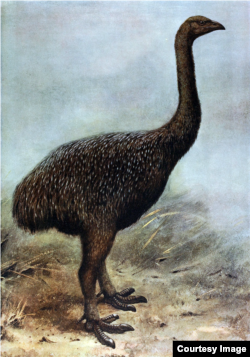It did not take a large human population to quickly hunt New Zealand's largest bird species to extinction.
A new study suggests there were less than 2,500 Polynesian settlers in New Zealand by the time the moa disappeared in the early 15th century. Archeological evidence indicates human settlements on the islands were established in the early 14th century.
Researchers Richard Holdaway and Chris Jacomb analyzed moa eggshell pieces excavated from early settlements to determine when moa hunting began. Dating moa remains from non-archeological sites indicate they were exterminated in much of the island only 70 to 80 years after hunting began.
Writing in the journal Nature Communications, researchers they say their findings show population size can not be used to absolve humans of involvement in other extinctions.
They note it has been suggested that people could not have caused the extinctions of North American mammoths or giant Australian marsupials because the human population at the time was too small.
The researchers also estimate during the time of the moa's extinction, New Zealand had one of the lowest population densities of any pre-industrial society, one person per 100 square kilometers.






